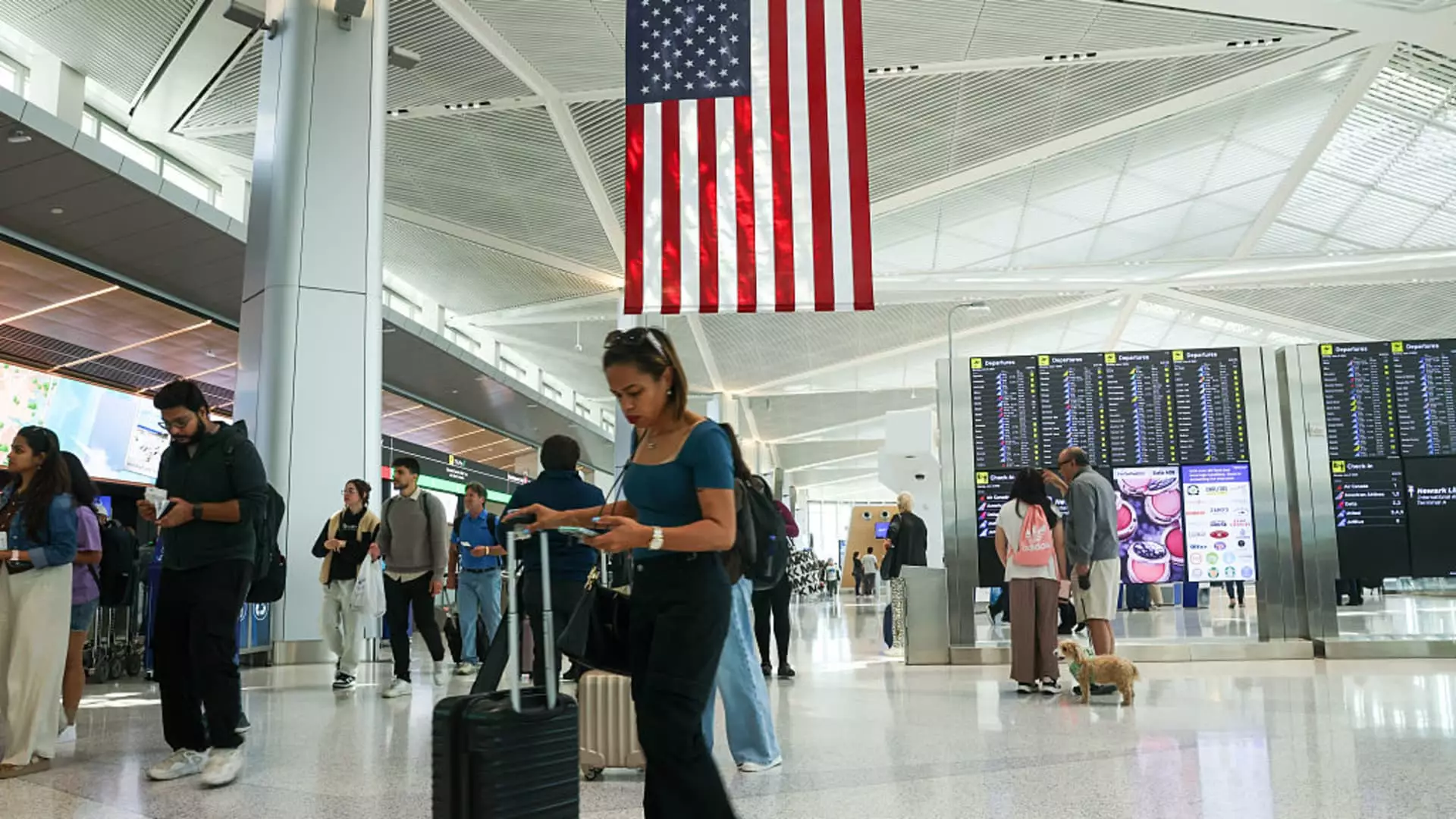Despite headlines celebrating the imminent surge of millions of travelers over the July 4 weekend, the reality of the airline industry’s current state presents a far bleaker picture. Airlines are increasingly resorting to rhetoric about “summer sales” and lower fares, attempting to mask the underlying issues plaguing the sector. For consumers, this might seem like a great deal, but for industry insiders, it signals a troubling imbalance. The so-called “summer rebound” is a fragile façade, sustained only by discounted fares that are driven more by desperation than genuine demand.
The data reveals that domestic airfare averages $265 for a round-trip, a 3% drop compared to last year and the lowest since 2021. While some might interpret this as a sign of recovery, the broader trend suggests otherwise. Airline executives, including Southwest Airlines CEO Bob Jordan, openly admit that ticket prices are on sale, indicating an oversupply of flights and tepid consumer enthusiasm. Far from a thriving industry, what we are witnessing is an industry clinging to superficial markers of success, unable to regain the momentum lost during the pandemic and economic uncertainties.
Precarious Economic Foundations and Uncertain Outlooks
The airline industry’s prospects remain murky due to a confluence of economic headwinds. Airlines have pulled back on forecasting for 2025, citing Trump-era tariffs, uncertainties surrounding immigration and overseas visitors, and a shaky global economy. These factors contribute to a “wait and see” approach, rather than confident expansion. Delta Air Lines, set to report earnings shortly, and other carriers, have expressed a cautious stance, noting that demand has not experienced a significant inflection point.
What compounds this fragility is the rising recognition that many flights are unprofitable, especially during off-peak days following the summer hustle. Airlines are actively reducing those routes, trying to shore up profitability in a landscape of fluctuating demand. This strategic contraction reveals an unwelcome truth: that the initial optimism for a quick-and-easy recovery was misplaced. The airline sector, traditionally a second and third-quarter powerhouse, is struggling to sustain its revenue, much less grow robustly.
The Illusion of Strong Travel Demand
While TSA figures indicate a record-breaking 18.5 million travelers anticipated over the next week, these numbers are deceptive. The record high was just shy of 3.1 million on June 22, which suggests that demand, while present, is nowhere near levels that justify bullish outlooks. The fact that travel is still far below pre-pandemic levels indicates a sluggish return rather than a surge.
Furthermore, economic indicators underscore the fragile nature of the current environment. Despite stronger-than-expected employment figures, ongoing declines in consumer spending on air travel paint a contrasting picture. Banks like Bank of America analyze data showing an 11.8% year-over-year decrease in air travel expenditures for June. This suggests that consumers remain cautious, hesitant to commit to leisure or business trips, even when prices are at their lowest.
International Travel: A Mixed Bag of Opportunities and Challenges
International travel, often touted as a pillar of airline growth prospects, presents a nuanced picture. While flights to Europe have become more affordable, averaging $817—almost $100 less than last year and on par with 2019 levels—other regions tell a different story. Asia, with fares down 13%, remains less accessible for many travelers due to lingering restrictions, geopolitical tensions, and economic uncertainties.
Big carriers like Delta and United lean heavily on international routes for revenue, but the declining premium fares and lower volume threaten their profitability. The optimistic narrative around international travel is largely based on limited data, ignoring the structural undercurrents that threaten long-term stability. Airlines need to be wary of overly relying on international markets that are inherently volatile and sensitive to global shocks.
The Stark Reality Behind the Fare Adjustments
The consistent pattern of fare reductions and route cutbacks signifies a critical shift. Airlines are increasingly focusing on capacity management rather than growth ambitions. This defensive posture makes sense; they recognize the demand isn’t sufficient to sustain the previous levels of service and profitability. What this suggests is a retreat, not a renaissance—a long-term adjustment to a new normal where airlines operate leaner, with less margin for error.
In fact, the emphasis on cutting unprofitable flights reveals an industry struggling to adapt to the new economic realities. Instead of expanding their offerings, airlines are tightening their belts, unwilling to risk further oversupply in a market hesitant to rebound. This cautious approach might foster short-term financial relief, but it also underscores the lack of genuine consumer-driven growth and a deeper structural weakness that politicians and industry leaders continue to ignore.


Leave a Reply